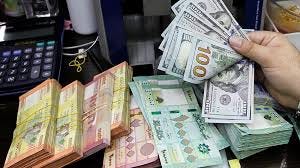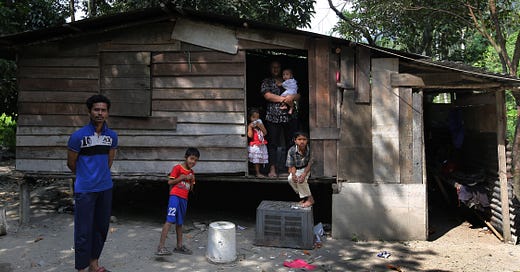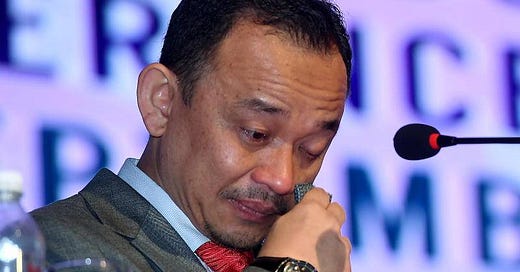
The Black Market Economy
There is a great difference between what a society espouses and what a society actually does
All societies espouse sets of moral standards. Universal moral standards tend to be closely aligned with religious codes, which have been enacted in national legal systems over hundreds, if not thousands of years. These basic moral tenants would include issues like stealing, murder, threatening others, adultery, self abuse, corruption, and so on.
However, there is a great difference between what a society espouses and what a society actually does. Looking at a society's consumption of counterfeit and illegal products gives one a window into what is really acceptable morality in a time and place.
The global black market website Havocscope provides a lot of information about what black market goods and illegal activities people in various countries undertake.
What is somewhat surprising is that 7 of the top 10 counterfeit markets occur within the developed world. The United States tops the list USD635.63 billion, 4th is Spain with USD124.06 billion, followed by Italy in 5th position with USD111.05 Billon black market economy. Japan and Canada follow in 6th and 7th with USD108.5 billion and USD77.83 billion black market economies respectively. The UK is in 9th position with a USD61.96 billion black market economy, and Russia 10th on USD49.04 billion.
In the developing world, China takes out 2nd place overall with USD261.0 billion, Mexico 3rd with a USD126.08 billion, and India 8th with a USD68.59 billion black market economy. This was followed by Brazil 16th on USD17.0 billion, Columbia 18th on USD14.50 billion, and Venezuela 19th on USD14.19 billion.
Within ASEAN, Indonesia ranked 13th overall with USD23.05 billion, the Philippines 14th on USD17.27 billion, Thailand 20th on USD13.95 billion, Malaysia in 40th place with USD2.99 (5.39) Billion, Myanmar 44th with USD1.70 billion, Laos 52nd with USD855 Million, Vietnam 53rd on USD815.5 million, and Singapore 66th with USD269.3 million.
The US consumption of counterfeit goods is around USD225 Billion. According to Havocscope statistics this is on par with the narcotics trade within the United States. The United Nations Office on Drugs and Crime (UNODC) report states that more than 50% of this trade is in clothing, accessories, and shoes, 10% in jewelry and watches, 7% in electrical goods,6% in medicines, 4% in cosmetics, and 4% in toys. Most of these goods are being imported from China.
Counterfeit goods and narcotics is followed by illegal gaming which is valued at USD150 Billion. Much of this is online, however starting price bookies are still very popular for sports betting. Movie, music and software piracy comes in at USD45 Billion within the United States.
Prostitution comes in at USD14.6 billion, where a report claims that over One Million people are of have been sex workers within the United States.
Cigarette and oil smuggling between different states within the US is in excess of USD 10 Billion each, which is encouraged by the differing state taxes and excises across the country.
Although the counterfeit trade within the US is said to cost US industry more than USD225 Billion per annum, many people think very little about buying a counterfeit branded product. Some don't even know that a good may be counterfeit at the point of sale. In an UK survey it was found although 90% of respondents believed it was morally wrong to buy counterfeit goods, financial considerations were paramount in their purchase decisions. Other illegal activities such as prostitution are victimless. However gaming often leads to addictions by some within the community, leading to social problems and poverty.
One very disturbing trend is the rapid rise in demand for human organs on the black market from dubious sources, which take advantage of the desperation of the poor, that people are willing to purchase in the United States. The size of this market is not really known, but is believed to be staggering in an underworld of sellers, buyers, brokers, and transporters.
The black markets in other developed countries have their own patterns of consumption. For example, where Spain has the highest per capita consumption of cocaine, it is reported some 3% of the population consume narcotics, the drug market is estimated at USD 95 Billion. Prostitution, fuelled by migrants from Latin America, Central Europe and Africa is a staggering USD 26.5 Billon. Movie, music and software piracy is relatively low at USD776.5 million. Where, in contrast movie and software piracy is much higher in Italy, where it is reported that 37% of the population view pirated movies.
In the United kingdom, cigarette and alcohol smuggling is a big deal, at almost USD 7 Billion. A third of the black market economy in the UK is narcotics at USD 28 Billion, and movie, music, and software piracy is at a staggering USD5.58 Billion.
The patterns are different again in the developing world with black markets reflecting cultural wants and cravings. In China for example, one third of the black market is comprised of illegal gambling valued at USD 93 Billion. Prostitution comes in 2nd at USD 73 Billion. Counterfeit products come in 3rd with USD 60 Billion, and the drug trade at USD 17 Billion. Wildlife smuggling is just slightly larger than software piracy, which are USD 10 Billion and USD 9 Billion respectively. Other large black market segments include illegal logging, counterfeit wine and spirits, and the trade in human organs.
Turning to the ASEAN region, Indonesia's largest black market industry is illegal logging at USD 8 Billion. Illegal fishing is a USD 3 Billion industry. Counterfeit goods is a USD 4.8 Billon industry, with a USD 500 Million counterfeit drug industry. Drug trafficking is a USD 4 Billon industry, where the Indonesian President Joko Widido has taken a hard political line, just recently refusing to grant clemency to convicted drug traffickers' death sentences. Prostitution was listed at USD2.25 Billon, software piracy USD 1.5 Billon, and wildlife trafficking at USD 1.0 Billon. One must also mention that Indonesia is a major staging point for human trafficking to Australia.
Drug trafficking is a USD 8.4 Billion industry in the Philippines. Prostitution is next at USD 6 million with a reported 800,000 sex workers. Oil and gas smuggling is a billion dollar industry, and illegal fishing nets more than USD 600 Million per annum. Cigarette smuggling is also a USD 600 million industry. Human organ trafficking is also rapidly growing in the Philippines.
The real immorality within black markets is the trade in items that hurts others
The prostitution industry is estimated at USD 6.4 Billion, with 250,000 sex workers in Thailand. The next largest black market industries are drug trafficking and illegal gambling valued at approximately USD 3 Billion each. Counterfeit products constitute a USD 1.3 Billion industry, while software, music and film piracy is valued at USD I Billion. Human trafficking is a large industry where actual figures are very difficult to determine. This had its sinister side earlier this year with mass graves of migrants found on both sides of the Thai-Malaysian border. It is also estimated that there are more than one million illegal workers in Thailand today that keep the economy afloat. The ivory illicit trade is another hidden black market industry, where Thailand appears to be a major transit point.
Illegal gaming is the largest black market industry in Malaysia estimated at USD 2.4 Billion, with many internet cafes around the country doubling as gambling shops. Prostitution is next at USD 1.0 Billion per annum. Software, music, and movie piracy is estimated at USD 750 Million. Illegal fishing and logging industries run into the hundreds of million dollars, with alcohol and cigarette smuggling valued at USD 268 Million, and USD 200 Million respectively. Oil and gas smuggling triggered by price incongruities due to Malaysian Government subsidies is estimated at USD 175 Million.
According to the US State Department, Malaysia is a regional production hub for crystal methamphetamine and ecstasy. Heroin is imported into Malaysia from the Golden Triangle and distributed around the world.
It is evident that many of the black and counterfeit markets described above are operated by petty traders who make a living by taking advantage of differential pricing caused by taxes and excises, such as the smuggling of petrol and cooking oil from Malaysia into Thailand. This can be seen as people taking advantage of pricing incongruities created through artificial pricing mechanisms. There have been attempts to link this with terrorist activities, but there is really little or no evidence of this.
There are hundreds of thousands of petty traders in the markets around ASEAN that buy and sell counterfeit brands. With branded products priced high, there will always be room for counterfeit products. Self-esteem on the part of consumers is a major driver in purchase decisions. Changing that will require a big change in peoples outlook towards respecting the rights of trademark and copyright holders in the region. As such today, many don't consider copyright or trademark infringement theft or stealing, as a brand is seen more as an 'icon' rather than a legal trademark that a corporation owns.
This is not just an Asian problem, tourists to the region relish shopping for counterfeit items to take home. The current hunt in Australia by film owners for illegal down-loaders of 'their property' shows the extent of disregard for copyright. The Dallas Buyers Club case shows the extent that the private sector is going to in defending their ownership rights by tracing illegal down-loaders through their IP addresses.
The real immorality within black markets is the trade in items that hurts others, such as human trafficking, people smuggling, human organ trafficking and the narcotics trade. These are all driven by high demand from certain groups of people, and in most cases pushed by willingness of people to participate and supply, due to economic impoverishment. These black-market industries attract the worst, where organized crime gets heavily involved in these 'cash cows'.
The solutions to these illicit markets have to date been wrong. The death penalty for drug and human trafficking will not deter criminal opportunists. Maybe these markets should be decriminalized and regulated to rid them of criminal elements, as has been tried in some European countries. However, it is too hard to see governments within the Asian region even consider narcotic decriminalization, let alone come to regional agreements on refugees and migration.
Black markets will continue to grow and thrive because of pricing incongruities, economic opportunity, and failure of governments to make the hard decisions and try new approaches.
Originally published in the Asian Correspondent 15th April 2015
You can subscribe for free emails of future articles here:










